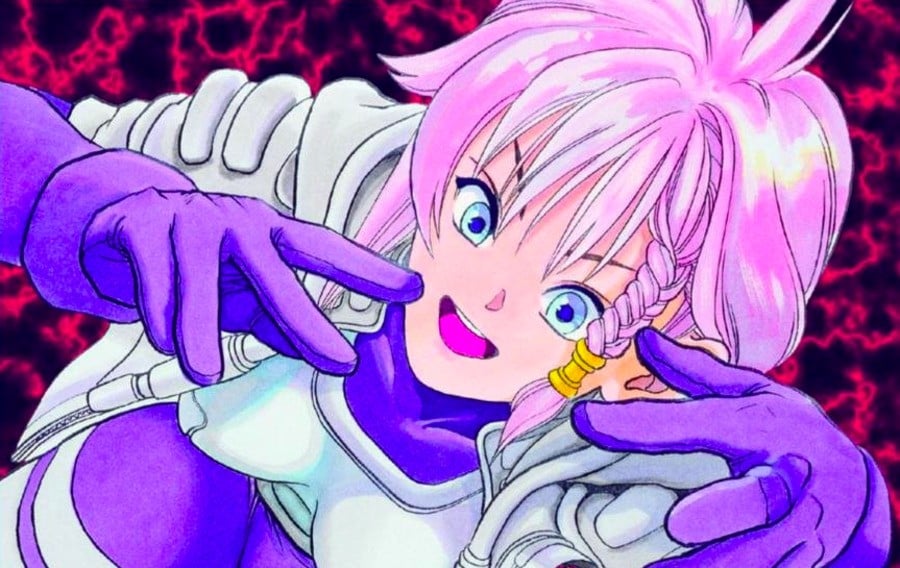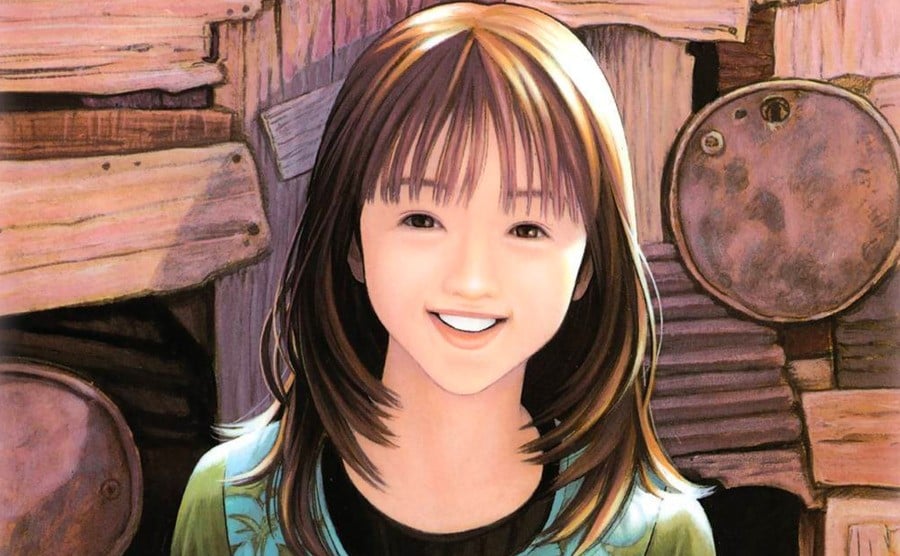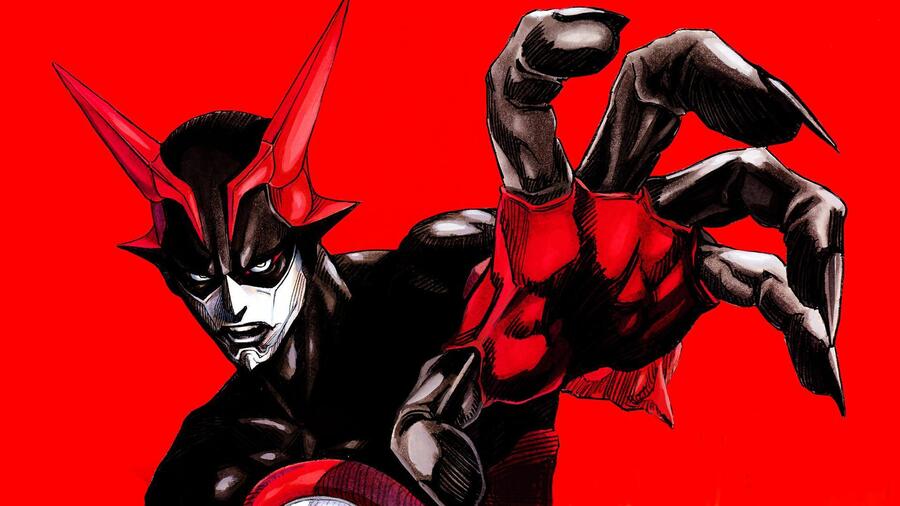
Although he's a famous manga artist in Japan, there's a good chance you've probably never heard of Masakazu Katsura – and if you have, it probably wasn't until very recently. He’s the character designer for Astral Chain, the latest action title from PlatinumGames. In anticipation of Astral Chain’s release, we’re taking a tour through some of his previous work so you can become better acquainted with his output (if you're not one of the lucky people who's already a fan, of course).
Masakazu Katsura was born in Japan in 1962. Growing up, he was always good at drawing, though amazingly, he never wanted to be a manga artist and had little interest in the medium, preferring movies and novels. He entered a manga contest when he was in high school purely so he could raise the funds to buy a stereo with the prize money; fame was not at the forefront of his mind at that time. As it turned out, he ended up winning the award and it launched his career.
Katsura has written several original manga series that have sold millions of copies worldwide and many have been adapted into other entertainment mediums, such as anime series and live-action movies. He has even done collaborations with his good friend, Akira Toriyama, the creator of Dragon Ball and character designer for Dragon Quest and Chrono Trigger.
Grab a box of tissues and get ready to nurse those broken hearts as we take a look back at some of Katsura’s career-defining titles.
Wing-Man

Kenta is so obsessed with superheroes that he invents his own: Wing-Man. He spends his days acting out fantasies about being Wing-Man. His wish is granted when Aoi, a princess from the dimension Podreams, is able to turn him into the hero he has created using a book called Dream Note, which (as you can probably guess) can make dreams come true. Turns she needs his help, too; Kenta, Aoi, and Kenta’s crush, Miku, must work together to save Podreams from Rimel, an evil dictator who wants to take it over using the Dream Note.
This was Katsura’s first big hit and laid the groundwork for much of his career. Wing-Man was the genesis of his unique style of storytelling, which focuses on dramatic love triangle stories for teenage boys that feature a strong comedic sci-fi or fantasy element. While the art may seem a little generic ‘80s, keep in mind he was still fine-tuning his style.
The 13 volumes of Wing-Man were serialized from 1983 to 1985. There was also a 47-episode anime TV series that aired from 1984 to 1985.
Video Girl Ai

“Dateless” Yota is in love with his classmate, Moemi. The only problem is, Moemi’s in love with his super-cool best friend, Takashi. Heartbroken, Yota rents a videotape featuring a pretty girl named Ai who’s supposed to cheer him up. When Yota plays the tape on his broken VCR, Ai literally comes out of the TV and makes it her mission to comfort him and help him pursue Moemi. The only thing is, because her tape was played on a broken VCR, Ai glitches and eventually develops feelings for Yota herself.
While Video Girl Ai features a lot of sci-fi elements, the series takes a very real look at unrequited love and how people deal with it. It focuses on its well-developed characters and takes their feelings and relationships seriously. Few artists can capture the adolescent discomfort of being in love quite like Katsura can. His signature art style starts to really take shape here, and his attention to detail is jaw-dropping. His early series like Wing-Man and Video Girl Ai helped to establish tropes and templates that would be used frequently by other manga artists in subsequent "shonen" romcoms.
The 15 volumes of Video Girl Ai were serialized from 1989 to 1992. There was a six-episode anime OVA series released in 1992, along with a live-action movie released the same year. Additionally, there was a 12-episode live-action TV series that aired in 2018, with a 12-episode sequel series that aired in 2019. Video Girl Ai has become one of Katsura's enduring hits.
DNA²

Karin is from 100 years in the future. She comes back in time to stop Junta from becoming the Mega-Playboy; a man who possesses DNA that makes him irresistible to women and ends up having 100 children who carry the same gene, who have another 100 children who carry the gene, eventually causing a huge overpopulation problem. Present-day Junta has a “girl allergy” which makes him vomit anytime he is aroused. The only girl who doesn’t cause this reaction is his childhood friend, Ami. Karin accidentally triggers Junta turning into the Mega-Playboy early and then devises a plan to hook him up with Ami to fix her mistake and save the future. Now that's a plot.
DNA² is probably Katsura’s most insane (and problematic) series. At its core, it’s a love story between two childhood best friends, with healthy servings of teen drama, time travel, science fiction, action, and fan service piled on top. While it seems like many of these elements would be at odds with each other, the ability to converge them and make them all work together to create something special is a testament to Katsura’s strength as a storyteller.
The five volumes of DNA² were serialized from 1993 to 1994. It was also a 12-episode anime TV series that came out in 1994, with a 3-episode sequel anime OVA series that followed in 1995.
Love & Destroy

Astral Chain isn’t Katsura’s first time doing character designs for a video game. He also did the designs for Love & Destroy, a Japanese-only PlayStation game released in 1999. The game was a hybrid between a third-person mech shooter and a dating sim, where the male pilot had to build a romantic relationship with the three female robot navigators between the shooter missions. Hey, it was the ‘90s.
Keeping in the realm of video games for one moment, it's worth noting that the OVA series Iria: Zeiram the Animation – whose lead character was designed by Katsura – spawned the Super Famicom title Hyper Iria.
I’’s

Shy Ichitaka is in love with his gorgeous swimsuit model classmate, Iori. He just can’t seem to tell her. While he tries to muster up the courage, his childhood friend, Itsuki, comes back from America and ends up moving in with him – and Itsuki isn’t shy about her feelings for Ichitaka.
I”s was a bit of a departure for Katsura as it contained no sci-fi or fantasy elements. It’s a straight teenage romantic comedy that didn’t have any mind-bending or unique hook. It proves that he could tell a good story without the need for alternative dimensions, time travel, or magical video stores. I”s is as true to life as a Katsura series gets.
The 15 volumes of I”s were serialized from 1997 to 2000. There was a two-episode anime OVA series released from 2002 to 2003, a six-episode anime OVA series released from 2005 to 2006, and a 13-episode live-action TV series that aired from 2018 to 2019.
Zetman

Jin and Kouga were once childhood friends, but now they’re the rival superheroes, ZET and Alphas. They both work to protect humanity from superhuman monsters known as Players. Coming from very different backgrounds, the two have contrasting definitions of justice and what it means to be a hero.
Zetman was even more of a departure for Katsura. Instead of another teenage romantic comedy, it’s a dark and complex deconstruction of the superhero genre. It includes very mature themes and graphic violence. His love for Batman and other superheroes can be seen in many of his past works and Zetman made it obvious that Katsura had a lot to say about the genre. Though vastly different than his previous works, if you have the stomach for grittier content, Zetman doesn’t disappoint.
The 20 volumes of Zetman were serialized from 2002 to 2014. There was also a 12-episode anime TV series that aired in 2012.
With his distinct art style and long history working within the science fiction genre, Katsura was the perfect choice for Astral Chain’s character design. From fantasy-infused romantic comedy to steely superhero deconstruction, there’s no doubt that he has made a name for himself in the Japanese pop culture world. His fans are already anxiously awaiting his next project, whatever that may be.





Comments 19
@Ayye-ant well, each to their own. But I've pre-ordered mine for tomorrow and I for one cannot wait. Bring it on, Platinum!
Cool, but still wish Akihiko Yoshida would always work with Platinum Games even if not with SE. His stuff is just amazing.
Anyway,... set to be delivered tomorrow. See his art in motion!
I was really happy when I saw his name in the trailer. I imagine his involvement is a big reason Astral Chain is rocking that neat early-90s anime look.
@Ayye-ant **looks at cyberpunk**
Yea. Astral Chain's hype is too much.
Been seeing that DNA 2 show on Amazon Video being recommended to me over and over, now I'm going to have to go and watch it.
I tried many times to watch Zetman but I couldn't seem to get through it. But I think I really like this guy's character design style, especially when it comes to women.
@LUIGITORNADO Yeah I think that, Death Stranding, and FF7 remake have Astral Chain beat. You remember that part at E3 where they showed off that really basic trailer and gameplay demonstration for Astral Chain and the crowd roared? Neither did I.
@LUIGITORNADO I only have a switch so idc about cyberpunk, never peaked my interest besides this is a Nintendo based website
I definitely know who Masakazu Katsura is. I have some of Jump series on my shelf here. I”s and Video Girl Ai.
@NotTelevision Astral Chain wasn't shown at an E3 press conference, so I'm confused by the comparison you tried to make here
More concept art articles, please. This was fun and informative, and this guy is clearly talented at what he does. Good stuff!
FYI Astral Chain is a Pokemon game. You trained the demons you caught and use it to fight other demons. This is Platinumgame’s Pokemonetta.
@Anri02 It was featured on the Nintendo E3 direct, but didn’t get much talk due to the other things featured.
@NotTelevision I don't know about your social circle, but in mine we were talking about it for a while. Plus are you expecting the hype for a brand new IP to match the hype for a remake of an extremely popular game, and a new game from an extremely famous director?
I think it's worth mentioning that he also did the character designs for Tiger & Bunny and it's recent spiritual successor Double Decker.
The game was marvelous, I still play it once in a while at random
SPOILER
The fight against the secret boss is funny AF, one of the most beautiful and satisfying boss fight in gaming history
It's like you're taunting me. Yes I was hoping to get Astral Chain for Christmas, no it didn't happen. Yes I plan to buy it now (after I finish my 3rd Playthrough of Fire Emblem Three Houses)
It's a bit weird to read about Masakazu Katsura here, as he was my favorite manga artist in my youth (when I still read manga). I loved Video Girl Ai (and Len) and still have his artbook 4C in a box somewhere.
I still like his style, so it's cool that he's part of such a renowned game.
No mention of Shadow Lady makes me sad. Still, awesome article. I was happy to see Katsura involved with Astral Chain, best of luck to him in his future projects.
I know Act 2 for Zetman is on the horizen, I can feel it in my gut
Tap here to load 19 comments
Leave A Comment
Hold on there, you need to login to post a comment...